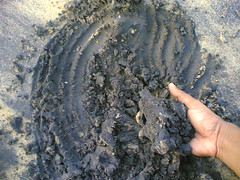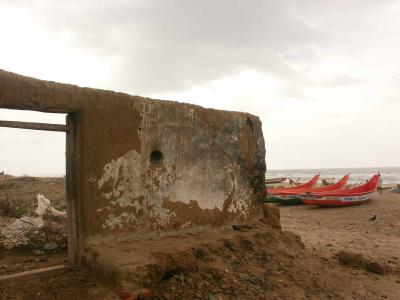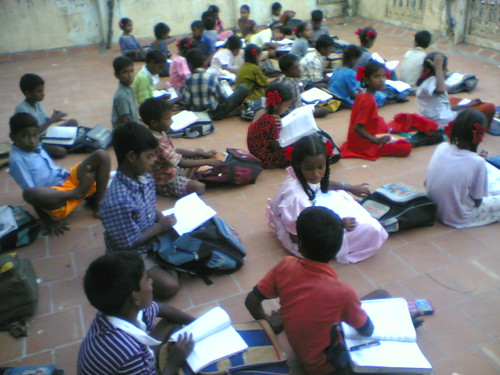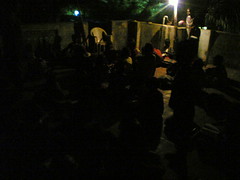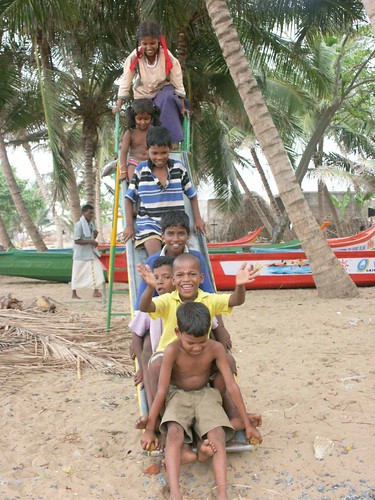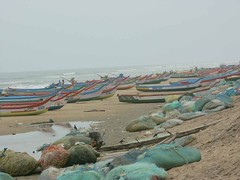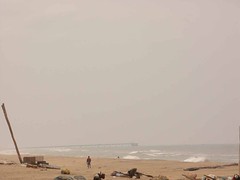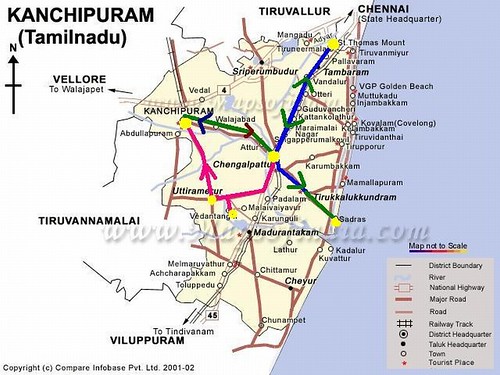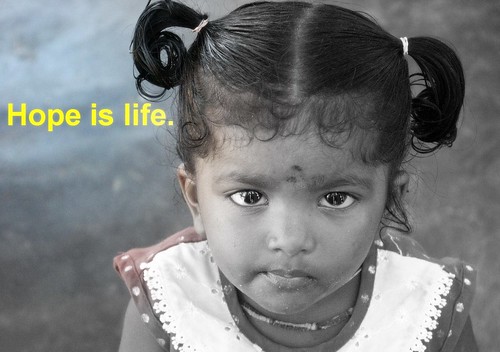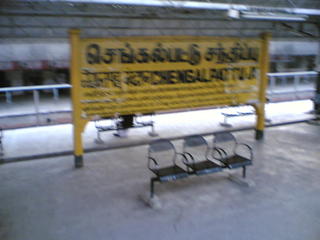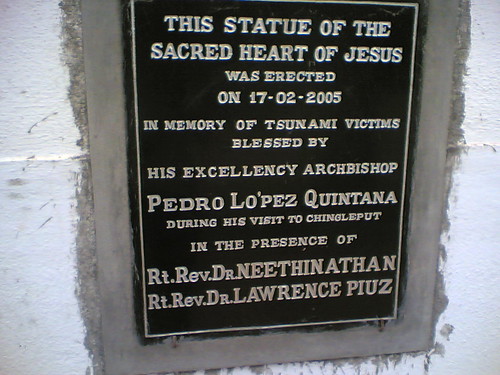A group of people from this quiet fishermen village -
Sadras (Sadurangapattinam) have come to meet the CRDS director to discuss the rebuilding plans. "Would you like to go with them and see the night school there?" asks Father Yesu Antony and I readily agree.
Winding through
State Highway SH 58, we pass via the temple township of Tiru kazhu gundram (where, for hundreds of years, two eagles have been coming to the top of the hill to eat the food offered by the temple priest). All along the way, there are hundreds of giant cement pipes that have been dumped as part of the much-emobroiled-in-poltics-and-controversey Veeraanam Water project for Chennai city. The route is scenic and with good Tamil songs in the FM Radio keeping us entertained, it is almost easy to forget why I am going there. But, I don't.
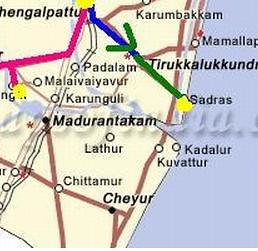
Sitting in the front seat of the Matador van, I take down notes on the roads, on interesting things that come in front of us (the herd of sheep, the occasional "tea-kadai" (Tea shop) and the scene around us. The first signs of the village approaching are when I see the
"Department of Atomic Energy" buses coming in opposite direction, taking employees of the Atomic Reactor plant, back home. The Eucalyptus and Casuarina trees and the beach sand announce the proximity of the sea.
That is when Kumar points out the nuclear reactor and its chimney to me. A new 500 MW plant is under construction and it was affected by the tsunami. Different people say different things about the impact of the tsunami on the reactor, but then who would know the real story anyway?
Amit Varma
writes in his blog, "Dr Pugazhenthi gives us a guided visual tour, from the beach, of where the reactor is. It is right on the shore, he shows us, and he tells us of how the waves penetrated the pumphouse, flooded the motor there – needed for cooling the reactor – and tripped the system. A safety engineer in the turbine room noticed that the system had tripped and effected a shut-down of the reactor. (There were also rumours of a small fire in the turbine room, which was soon brought under control.) No issues there.“A bigger problem than the reactor itself,” he tells us, “is the waste-management faculty, which is a kilometre from the shore. The waters did not go that far this time [they went much further in Nagapattinam, though], if something like this happens again and they do go that far, it could be a disaster. If the affluents there leak out, marine life across the coast would be devastated. It would be a massive environmental disaster."
Anyway, we reach Sadras and I get down to see the situation around. Kumar and I sit on one of the damaged boats to talk. I am careful not to ask the typical 'disaster-tourist' questions ---
"How did you feel on that day? "How far did the water go", "What were you doing when the waves lashed?", "How was the scene like" etc. So many people must have asked him the same questions in different words and he must have answered them all, the patient person he is. The past is behind us. I remind myself that for the short while I am here, let me get to know my people and see if I can be of some help in their efforts towards a normal life. And do all that I can to make a difference in some way.
I sit quietly looking at the gentle waves trying to reach our feet.
That is when I notice something abnormal in the sand.